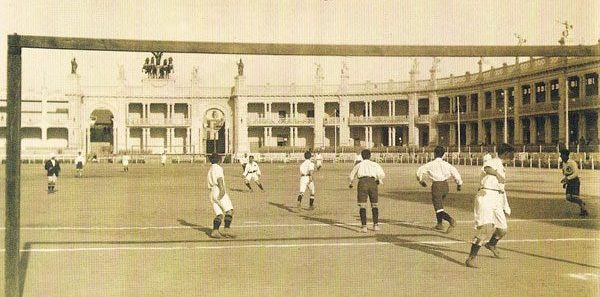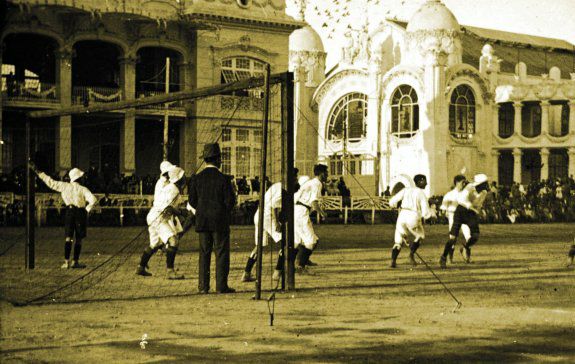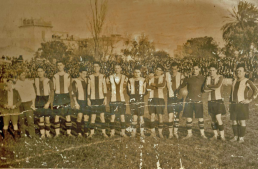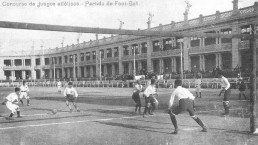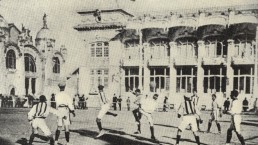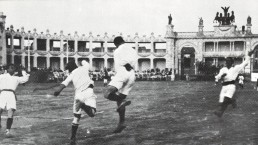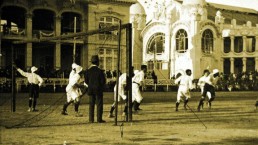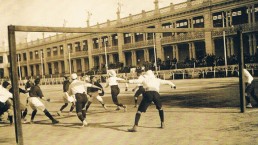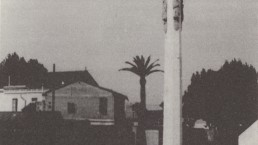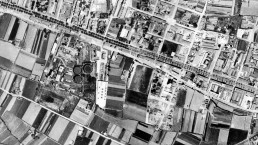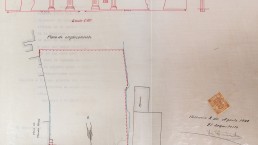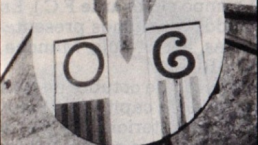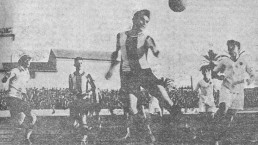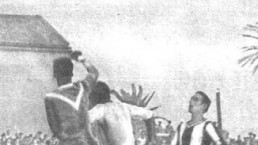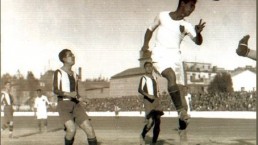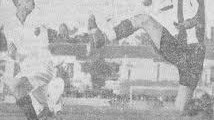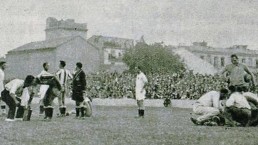A Levante F.C. line-up at Campo de La Cruz in the second half of the 1920s.
The image of Levante F.C., since its dawn, projected on the inside of the pitch has always been closely associated with the Placheta pitch. From the beginning of time these two variables have been linked. And yet, between September 1909, when the company was founded, and September 1922, the official opening of the Campo de La Cruz, Levante showed a tendency to transhumance, playing its matches in different venues located in different parts of the city, not always adjacent to its closest and closest surroundings due to its constitution and anchorage to the area of the Poblados Marítimos
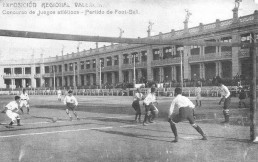
Great Track Of The Valencian Regional Exhibition Of 1909. Photo: Rafael Solaz Private Archive.
The first clashes of the team led by José Ballester in the framework of the nascent competition that emerged after the summer of 1909 took place at La Explanada de la Exposición Regional and the pitch linked to the Sociedad Gimnástica de Valencia. On 15 March 1911, Levante played a friendly match against Lucentum of Alicante. This is one of the best documented matches in the local press. The match was scheduled for 3.30 p.m. and took place at the Pista (court) located at the Regional Exhibition. It was a clash in aid of the Asociación Valencia de la Caridad. The total proceeds of the match were destined for this philanthropic organisation..
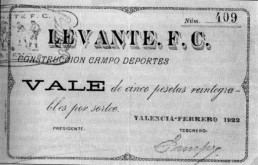
Vouchers issued by Levante F.C. for the construction of the Campo de La Cruz.
In the middle years of the second decade of the 20th century, the Placheta stadium continued to act as a link with Levante, and some authors even place the team on the Robillard pitch, but the regional championship of the 1920-1921 season placed Levante on the Algirós bank in defence of the home matches. It is possible that the club rented the Valencia ground for such purposes. It was a common occurrence in those days due to the lack of sports facilities. And the following season, 1921-1922, they sought accommodation at the Estadio de La Soledad, owned by Gimnástico, for each of their home matches. This migratory movement ceased after the construction of the Estadio de La Cruz.
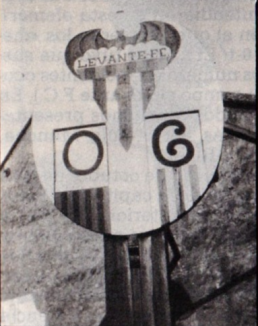
The scoreboard at Campo de La Cruz.
On Sunday 3 September 1922, Levante officially inaugurated the Estadio de La Cruz located on the Camino Hondo del Grao. The construction of large stands in the general and preference areas would place this facility at the apex of the large contemporary stadiums built in Spain at the same time. The chronicles reported a capacity to hold 8,000 souls. The established liturgy determined the dispute of a match between Levante and Valencia. The battle opened the 1922-1923 sporting season and ended with a clear victory for the visitors after goals by Rino, Cubells and Montes.
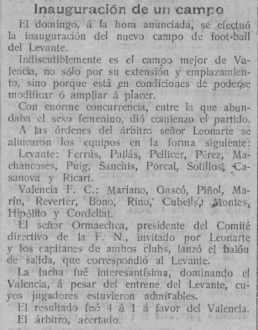
Levante F.C. and Valencia F.C. opened the Campo de La Cruz in September 1922.
The directors of Levante chose the land located on the Camino Viejo del Grao in the vicinity of Conserva Street and Travesía de La Cruz for the construction of the stadium. The erection of this imposing fortification was not homogeneous. The dossier addressed to the Valencia City Council, dated 2 August 1922, signed by Ángel Fernández, president of the club, offers additional information regarding the growth and the change in appearance that the stadium has undergone since its inauguration.
Thus, the inauguration of the 1924-1925 academic year coincided with the presentation of a series of improvements that embellished the building; from the façade, built by José Granell, to the construction of an extensive grandstand in front of the one already built with a capacity for three thousand spectators, erected by Leandro Prunoñosa Pastor, an accredited industrialist from El Grao. Levante F.C. issued vouchers for five pesetas to cover part of the costs of the construction of this work. Since September 1922, the club had an allegorical and recognisable space to compete for the symbol of victory.
